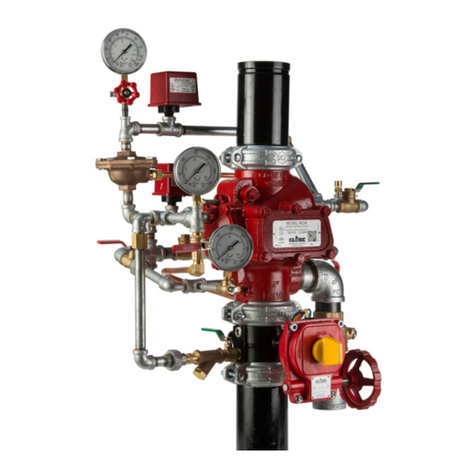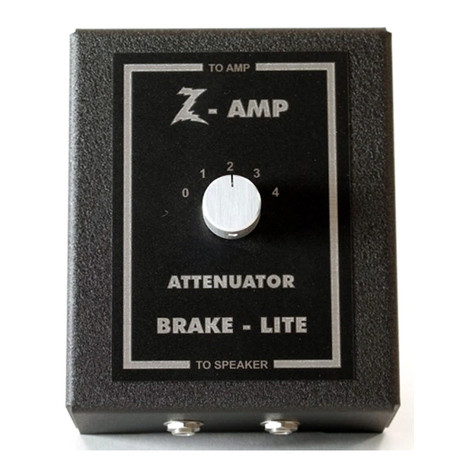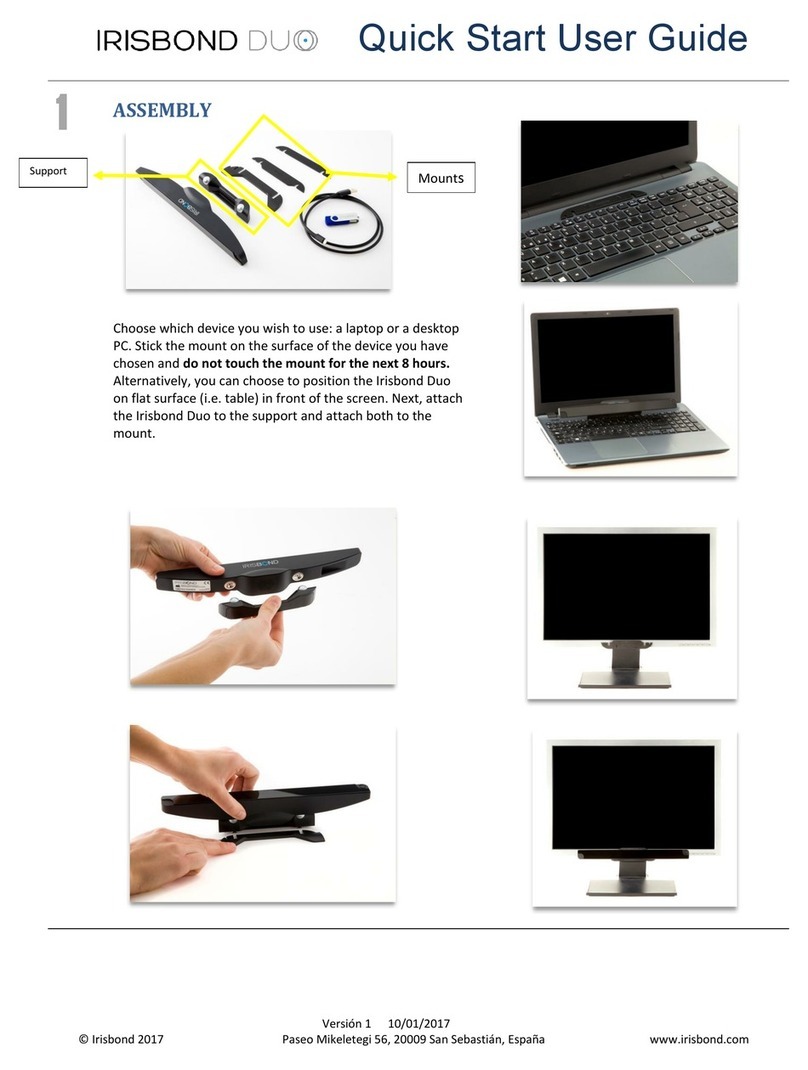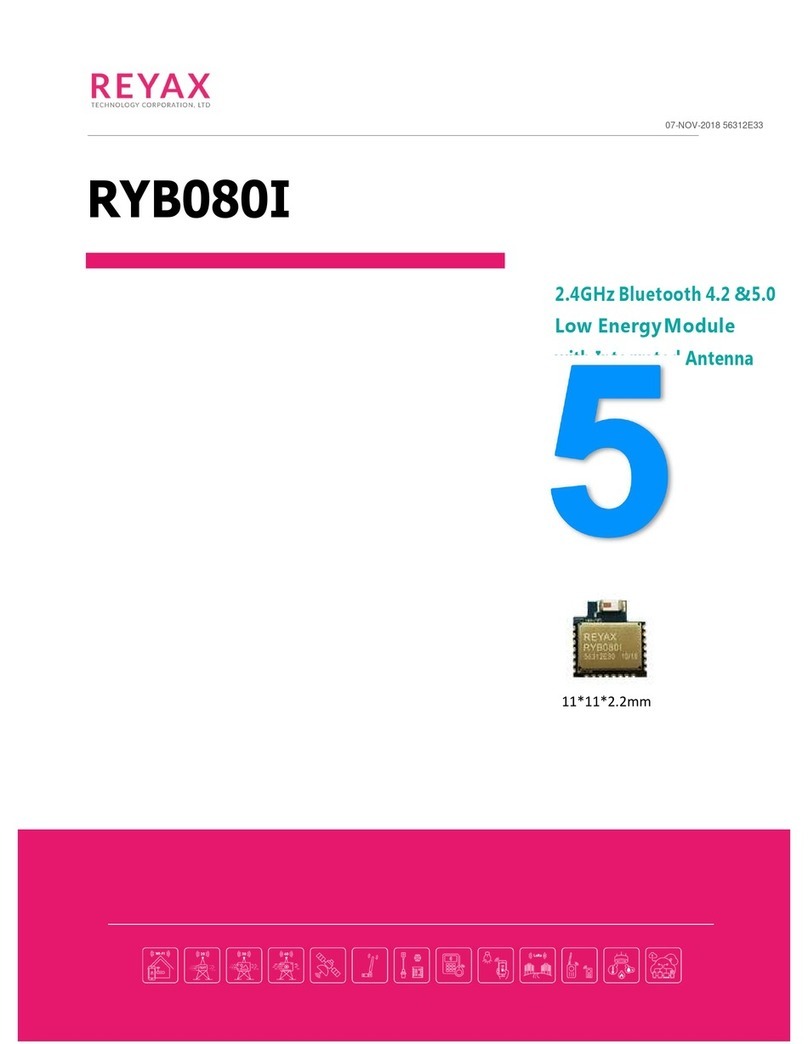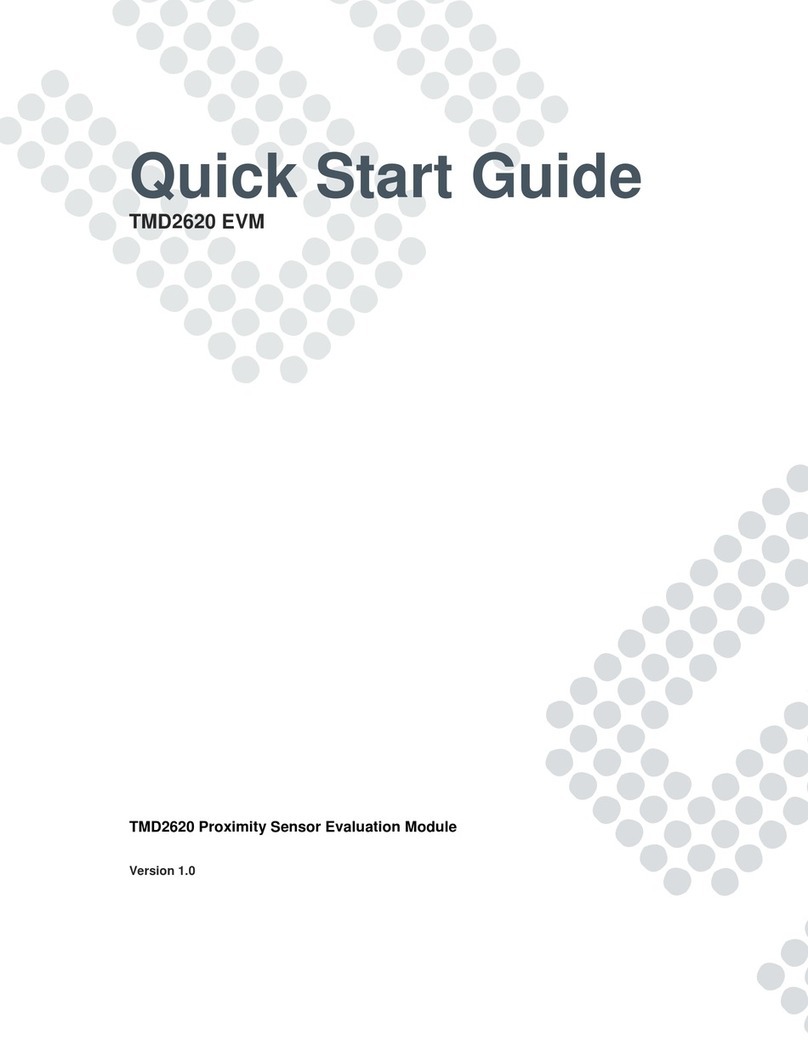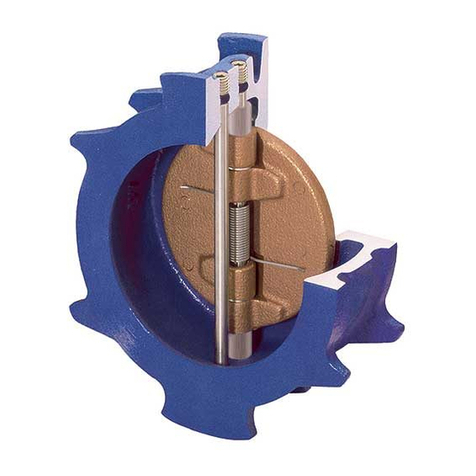TELink 825X User manual

Telink Module TLSR825XML32D User
Manual
2019/4/9
TELINK SEMICONDUCTOR
Keyword:
Features; Pin connection; User manual
Brief:
This is a user manual for Telink 825X Module
TLSR825XDB48.

Telink Module TLSR825XML32D User Manual
1
Published by
Telink Semiconductor
Bldg 3, 1500 Zuchongzhi Rd,
Zhangjiang Hi-Tech Park, Shanghai, China
© Telink Semiconductor
All Right Reserved
Legal Disclaimer
This document is provided as-is. Telink Semiconductor reserves the right to make
improvements without further notice to this document or any products herein. This
document may contain technical inaccuracies or typographical errors. Telink
Semiconductor disclaims any and all liability for any errors, inaccuracies or
incompleteness contained herein.
Copyright (c) 2019 Telink Semiconductor (Shanghai) Ltd, Co.
Information:
For further information on the technology, product and business term, please
contact Telink Semiconductor Company (www.telink-semi.com).
For sales or technical support, please send email to the address of:
telinkcnsales@telink-semi.com
telinkcnsupport@telink-semi.com

Telink Module TLSR825XML32D User Manual
2
Table of contents
1 Product Introduction .............................................................................................. 3
1.1 General description .......................................................................................... 3
1.2 Key features ..................................................................................................... 3
2 Pin Connection Guide ............................................................................................. 8
2.1 Supply power ................................................................................................... 8
2.2 Download firmware ......................................................................................... 9
2.3 Test RF signal .................................................................................................... 10
1.3 GPIO Pin layout ................................................................................................ 5

Telink Module TLSR825XML32D User Manual
3
1Product Introduction
This is a user manual for Telink Module TLSR825XML32D.
1.1 General description
The TLSR825XML32D, which is based on Telink TLSR825XF512ET32
chip, provides a BLE wireless system.
The TLSR825XML32D integrates a power-balanced 32-bit MCU, BLE, 64kB
SRAM, 512kB internal Flash, 14bit ADC with PGA, analog and digital microphone
input, stereo audio output, 6-channel PWM, one quadrature decoder (QDEC),
abundant and flexible GPIO interfaces, and nearly all the peripherals needed for IoT
(Internet of Things) and HID (Human Interface Devices) application development
(e.g. Bluetooth Low Energy).
The TLSR825XML32D supports standards and industrial alliance specifications
including Bluetooth Low Energy (up to Bluetooth 5).
Telink TLSR825XML32D board can be used for SDK development. Firmware can
be directly downloaded to the TLSR825XML32D board to be up and running.
1.2 Key features
Bluetooth 5 Compliant, 1Mbps, 2Mbps, Long Range 125kbps and 500kbps
64kB on-chip SRAM with up to up to 32kB retention
512kB internal Flash
A rich set of I/Os: SPI, I2C, Single wire, up to 17 GPIOs, UART with hardware flow
control and 7816 protocol support, DMIC (Digital Mic), AMIC (Analog Mic), I2S,

Telink Module TLSR825XML32D User Manual
4
Stereo Audio output
6-channel PWM (Pulse Width Modulation) output
6-channel (only GPIO input), 14-bit SAR ADC with 10.5-bit ENOB
4-channel PGA, differential input
Tx output power: Typ. +9.47dBm
RSSI monitoring with +/-1dB resolution
Power supply: DC3.3V

Telink TLSR825XML32D User Manual
5
1.3GPIO Pin layout
Figure 1Pin layout
Pin definition is shown as the Table 1:
Table 1 Pin definition
Pin
No
Module Pin Name
Chip Pin Name
Description
J1
1
TL_GPIO2
SPI_CN/I2S_LR/PWM3/PD<2>
SPI chip select (Active low) / I2S
left right channel select / PWM3
output / GPIO PD[2]
2
TL_GPIO1
PWM1_N/I2S_SDI/7816_TRX
(UART_TX)/PD<3>
PWM1 inverting output / I2S
serial data input / UART 7816
TRX (UART_TX) / GPIO PD[3]
3
TL_GPIO0
SWM/I2S_SDO/PWM2_N/
PD<4>
Single wire master / I2S serial
data output / PWM2 inverting
output / GPIO PD[4]
4
TL_Grant
SPI_CK/I2S_BCK/7816_TRX
(UART_TX)/PD<7>
SPI clock (I2C_SCK) / I2S bit clock
/ UART 7816 TRX (UART_TX) /
GPIO PD[7]
5
TL_Priority
DMIC_DI/PWM0_N/UART_RX/
PA<0>
DMIC data input / PWM0
inverting output / UART_RX /
GPIO PA[0]
6
TL_Request
DMIC_CLK/7816_CLK/I2S_CLK/
PA<1>
DMIC clock / UART 7816 clock
/ I2S clock / GPIO PA[1]

Telink TLSR825XML32D User Manual
6
Pin
No
Module Pin Name
Chip Pin Name
Description
7
TL_SWS
SWS/UART_RTS/PA<7>
Single wire slave/ UART_RTS /
GPIO PA[7]
8
TL_UTX
PWM4/UART_TX/ATSEL2/lc_comp
_ain<1>/sar_aio<1>/PB<1>
PWM4 output / UART_TX /
Antenna select pin 2 / Low
power comparator input / SAR
ADC input / GPIO PB[1]
J2
1
TL_C4
PWM2/UART_CTS/PWM0_N/
sar_aio<8>/BIAS/PC<4>
PWM2 output / UART_CTS /
PWM0 inverting output / SAR
ADC input / AMIC BIAS /
GPIO PC[4]
2
TL_C3
PWM1/UART_RX/I2C_SCK/XC32K_
I/PGA_N1/PC<3>
PWM1 output / UART_RX / I2C
serial clock / (optional) 32kHz
crystal input / PGA right channel
negative input / GPIO PC[3]
3
TL_C2
PWM0/7816_TRX(UART_TX)/I2C_
SDA/XC32K_O/PGA_P1/PC<2> *1
PWM0 output / UART 7816 TRX
(UART_TX) / I2C serial data /
(optional) 32kHz crystal output /
PGA right channel positive input
/ GPIO PC[2]
4
TL_C1
I2C_SCK/PWM1_N/PWM0/
PGA_N0/PC<1>
I2C serial clock / PWM1
inverting output / PWM0 output
/ PGA left channel negative
input / GPIO PC[1]
5
TL_C0
I2C_SDA/PWM4_N/UART_RTS/
PGA_P0/PC<0>
I2C serial data / PWM4 inverting
output / UART_RTS / PGA left
channel positive input / GPIO
PC[0]
6
GND
Ground
7
TL_VDD
VDD_IO/VDD3/VDDIO_AMS
3.3V power supply
8
TL_URX
SDM_N1/SPI_DO/UART_RX/
lc_comp_ain<7>/sar_aio<7>/
PB<7>
SDM negative output 1 / SPI
data output / UART_RX / Low
power comparator input / SAR
ADC input / GPIO PB[7]
9
TL_B6
SDM_P1/SPI_DI/UART_RTS/
lc_comp_ain<6>/sar_aio<6>/
PB<6>
SDM positive output 1 / SPI data
input (I2C_SDA) / UART_RTS /
Low power comparator input /
SAR ADC input /
GPIO PB[6]

Telink TLSR825XML32D User Manual
7
Pin
No
Module Pin Name
Chip Pin Name
Description
10
TL_B5
SDM_N0/PWM5/lc_comp_ain<5>/
sar_aio<5>/PB<5>
SDM negative output 0 / PWM5
output / Low power comparator
input / SAR ADC input / GPIO
PB[5]
11
TL_B4
SDM_P0/PWM4/lc_comp_ain<4>/
sar_aio<4>/PB<4>
SDM positive output 0 / PWM4
output / Low power comparator
input / SAR ADC input / GPIO
PB[4]

Telink Module TLSR825XML32D User Manual
8
2Pin Connection Guide
2.1 Supply power
The TLSR825XML32D supports supply power via battery.
Connect PIN6 (GND) and PIN7 (TL_VDD) of J2 with GND and 3.3V of power,
respectively.
Figure 2Connection chart to supply power

Telink Module TLSR825XML32D User Manual
9
2.2 Download firmware
To download firmware into TLSR825XML32D, first make sure the
TLSR825XML32D is supplied with power normally. That is, connect PIN6 and PIN7 of
J2 with GND and 3.3V of power, respectively.
Then connect J1 PIN7 (SWS) of the TLSR825XML32D with SWM of a burning EVK.
Meanwhile, connect the miniUSB interface of the burning EVK with PC USB.
Figure 3Connection chart to download firmware

Telink Module TLSR825XML32D User Manual
10
2.3 Test RF signal
To test RF signal of TLSR825XML32D, first make sure the TLSR825XML32D is
supplied with power normally. That is, connect PIN6 and PIN7 of J2 with GND and
3.3V of power, respectively.
Attach the semi-rigid cable welding steel to the PCBA GND. Then solder wire
core to feed point.
Figure 4Connection chart to test RF signal

3.3.Limitedmoduleprocedures
Not applicable
3.4.Traceantennadesigns
Not applicable
3.5.RFexposureconsiderations
ThisequipmentcomplieswithFCCradiationexposurelimitssetforth
for an uncontrolled environment. This equipment should be installed an
d operated with minimum distance 20cm between the radiator& your
body. If the device built into a host as a portable usage, the additional RF
exposure evaluation may be required as specified by §2.1093.
3.6.Antennas
3.IntegratorsInstallationManual
3.1.ListofapplicableFCCrules
This device complies with part 15.247 of the FCC Rules.
3.2.Summarizethespecificoperationaluse
conditions
Thismodulecanbeusedinelectroniccontrols,industrialapplicationand
otherenvironment.ThepowersupplyisDC 3.3V.Theoperating
temperaturerangeis-40℃to+85℃.This module using only one kind of antennas
with maximum gain is 0 dBi .Other antenna arrangement is not covered by this
certification.The antenna is not field replaceable. If the antenna needs to be changed,
the certification should be re-applied.
Antennatype:
PCBantenna
2.4GHzbandPeakGain0(dBi)

3.8.Informationontestmodesand
additionaltestingrequirements
a)Themodulartransmitterhasbeenfullytestedbythemodulegranteeon
therequirednumberofchannels,modulationtypes,andmodes,itshouldnotbe
necessaryforthehostinstallertore-testalltheavailabletransmittermodesor
settings.Itisrecommendedthatthehostproductmanufacturer,installingthe
modulartransmitter,performsomeinvestigativemeasurementstoconfirmthat
theresultingcompositesystemdoesnotexceedthespuriousemissionslimitsor
bandedgelimits(e.g.,whereadifferentantennamaybecausingadditional
emissions).
b)Thetestingshouldcheckforemissionsthatmayoccurduetotheintermixingof
emissionswiththeothertransmitters,digitalcircuitry,orduetophysical
propertiesofthehostproduct(enclosure).Thisinvestigationisespecially
importantwhenintegratingmultiplemodulartransmitterswherethecertification
isbasedontestingeachoftheminastand-aloneconfiguration.Itisimportantto
notethathostproductmanufacturersshouldnotassumethatbecausethe
modulartransmitteriscertifiedthattheydonothaveanyresponsibilityforfinal
productcompliance.
The outside of final products that contains this module device must display a
label referring to the enclosed module. This exterior label can use wording such
as: “Contains Transmitter Module FCC ID: OEOTLSR825XML32D ”,or
“Contains FCC ID: OEOTLSR825XML32D ”, Any similar wording that expresses
the same meaning may be used.
3.7.Labelandcomplianceinformation

c)Iftheinvestigationindicatesacomplianceconcernthehostproduct
manufacturerisobligatedtomitigatetheissue.
3.9.Additionaltesting,Part15SubpartB disclaimer
The final host / module combination need to be evaluated against the FCC Part 15B
criteria for unintentional radiators in order to be properly authorized for operation as a Part
15 digital device.
The host integrator installing this module into their product must ensure that the final
composite product complies with the FCC requirements by a technical assessment or
evaluation to the FCC rules, including the transmitter operation and should refer to
guidance in KDB 996369.
Frequency spectrum to be investigated
For host products with certified modular transmitter, the frequency range of investigation
of the composite system is specified by rule in Sections 15.33(a)(1) through (a)(3), or the
range applicable to the digital device, as shown in Section 15.33(b)(1), whichever is the
higher frequency range of investigation.
Operating the host product
When testing the host product, all the transmitters must be operating.The transmitters can
be enabled by using publicly-available drivers and turned on, so the transmitters are
active. In certain conditions it might be appropriate to use a technology-specific call box
(test set) where accessory devices or drivers are not available.
When testing for emissions from the unintentional radiator, the transmitter shall be placed
in the receive mode or idle mode, if possible. If receive mode only is not possible then, the
radio shall be passive (preferred) and/or active scanning. In these cases, this would need

FCC Statment:
Any Changes or modifications not expressly approved by the party responsible
for compliance could void the user's authority to operate the equipment.
This device complies with part 15 of the FCC Rules. Operation is subject to the
following two conditions:
(1) This device may not cause harmful interference, and
(2) This device must accept any interference received, including interference
that may cause undesired operation.
to enable activity on the communication BUS (i.e., PCIe, SDIO, USB) to ensure the
unintentional radiator circuitry is enabled. Testing laboratories may need to add
attenuation or filters depending on the signal strength of any active beacons (if applicable)
from the enabled radio(s). See ANSI C63.4, ANSI C63.10 and ANSI C63.26 for further
general testing details.
The product under test is set into a link/association with a partnering WLAN device, as per
the normal intended use of the product. To ease testing, the product under test is set to
transmit at a high duty cycle, such as by sending a file or streaming some media content.
This manual suits for next models
1
Table of contents
Other TELink Control Unit manuals
Popular Control Unit manuals by other brands
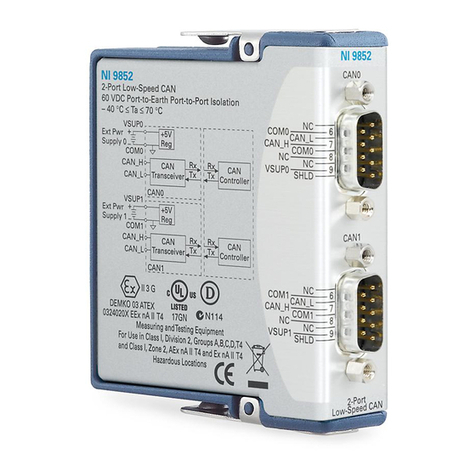
National Instruments
National Instruments NI 9852 Getting started guide
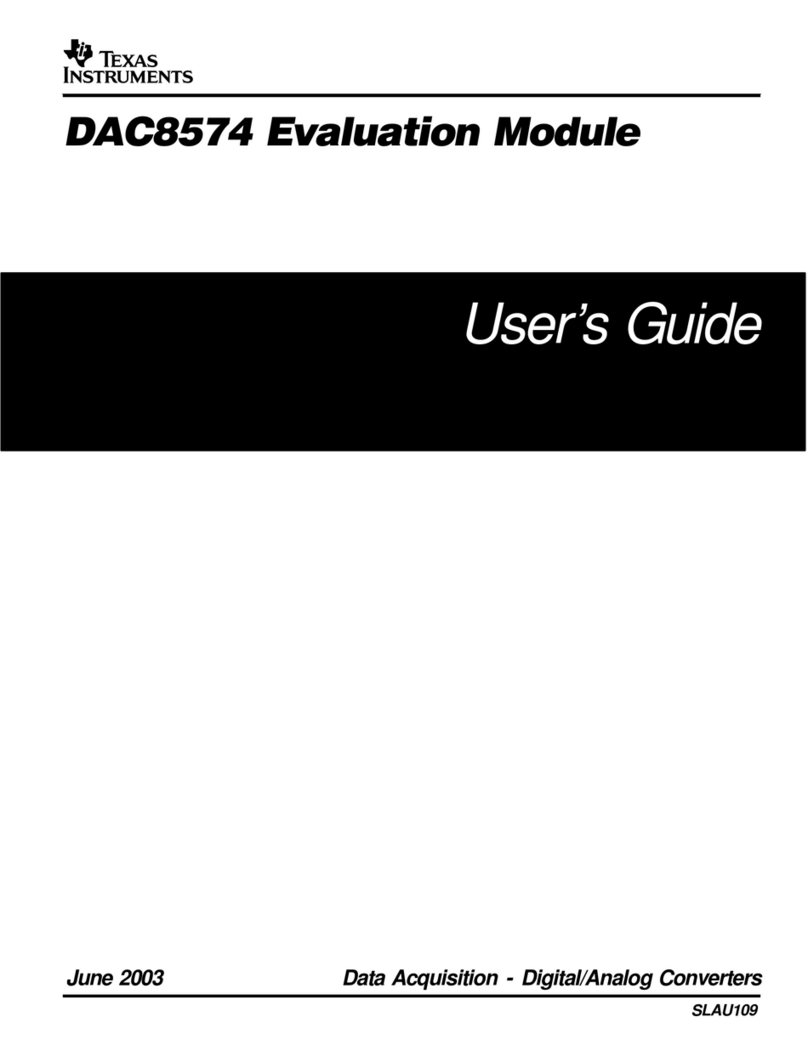
Texas Instruments
Texas Instruments DAC8574 user guide
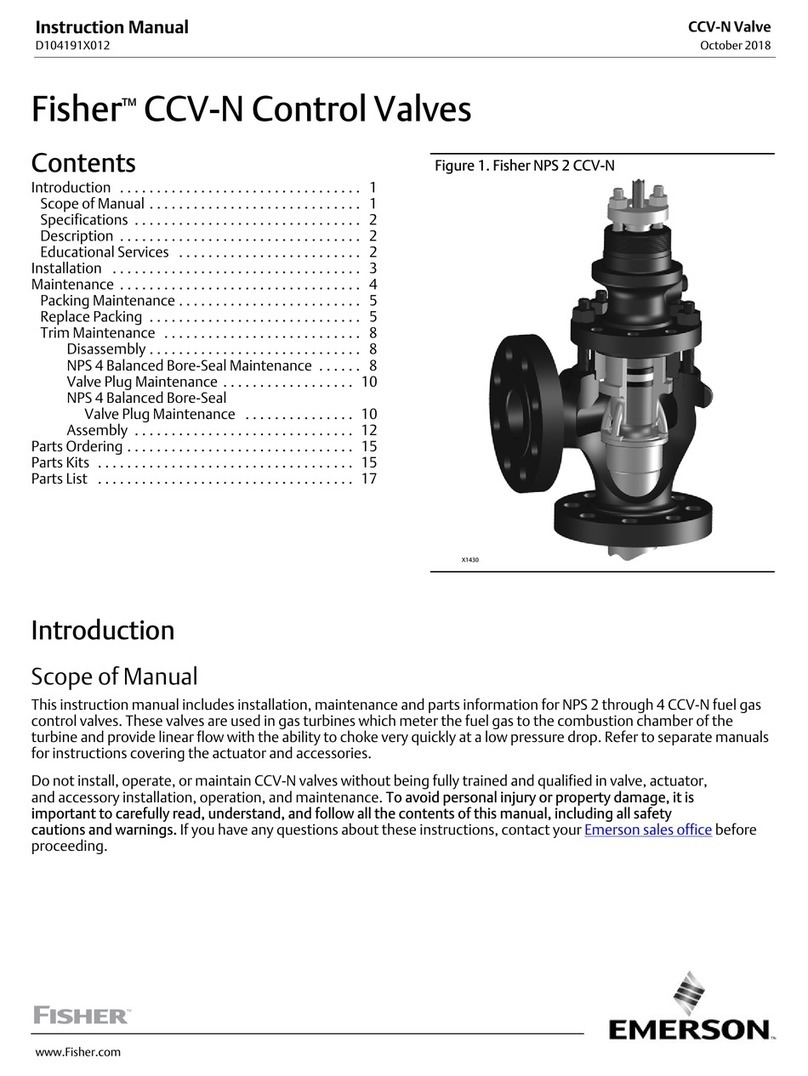
Emerson
Emerson Fisher NPS 2 CCV-N instruction manual
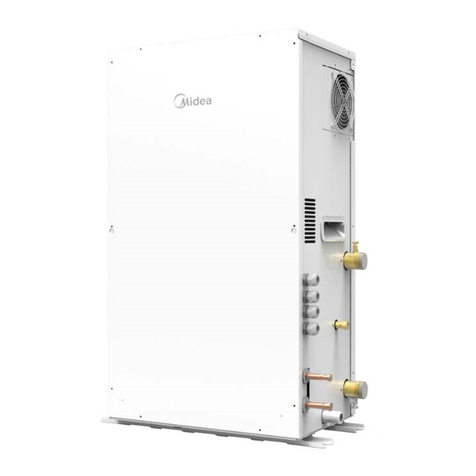
Midea
Midea SMK-D140HHN1-3 manual
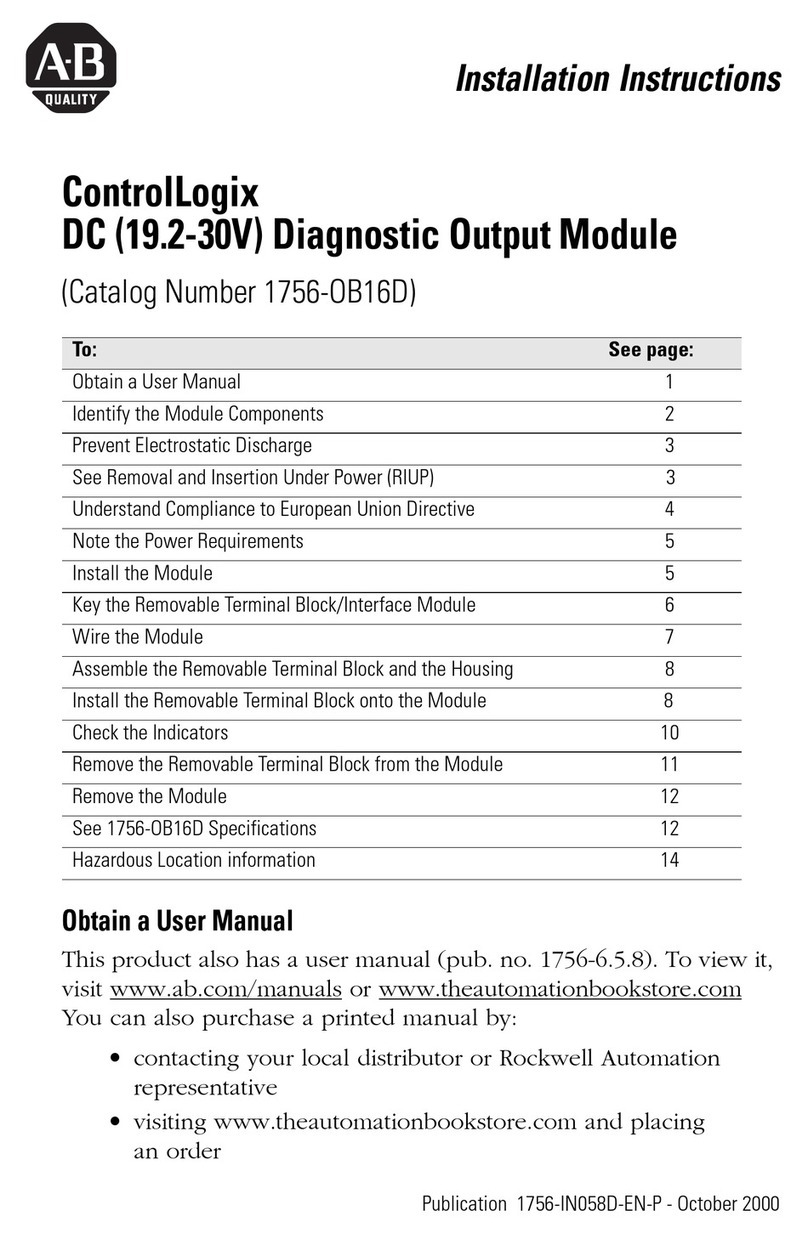
Allen-Bradley
Allen-Bradley ControlLogix 1756-OB16D installation instructions
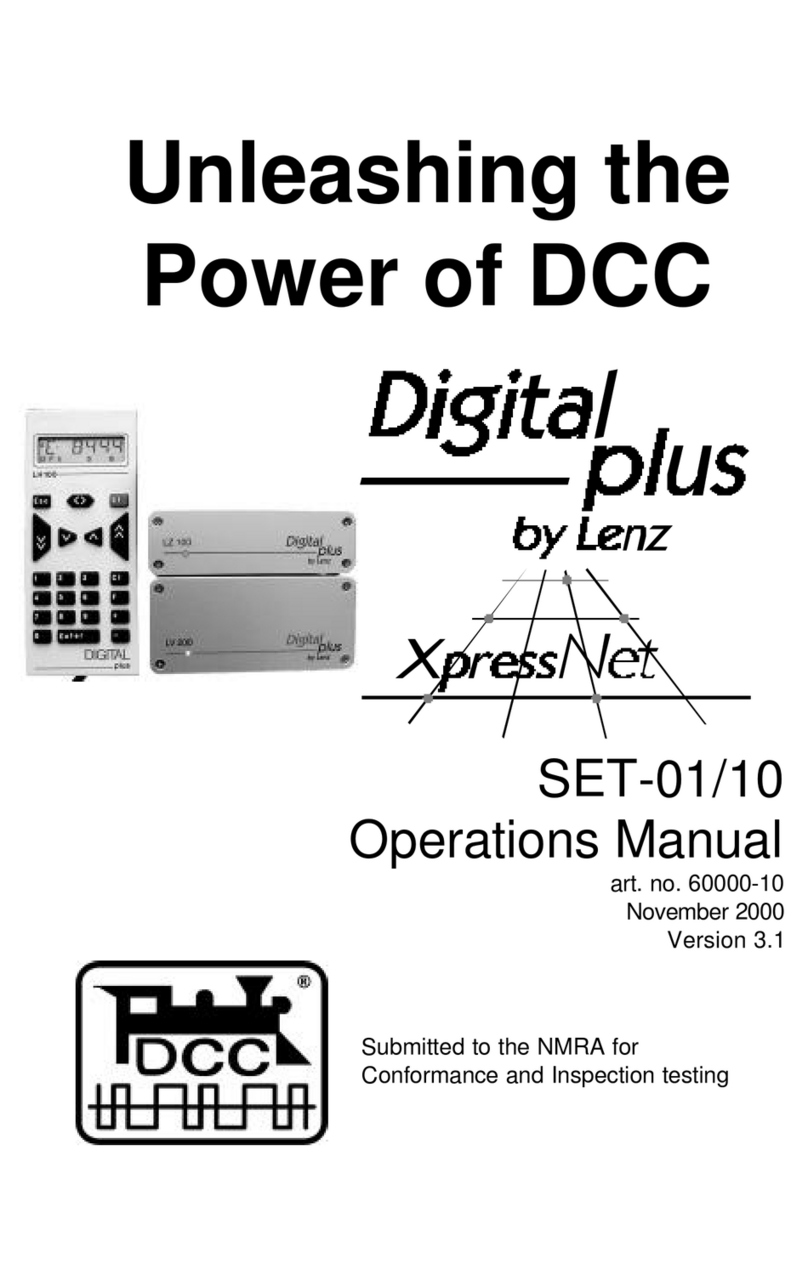
Lenz
Lenz Digital Plus XpressNet SET-01/10 Operation manual

Pentair
Pentair AUTOTROL Performa 263 Installer manual
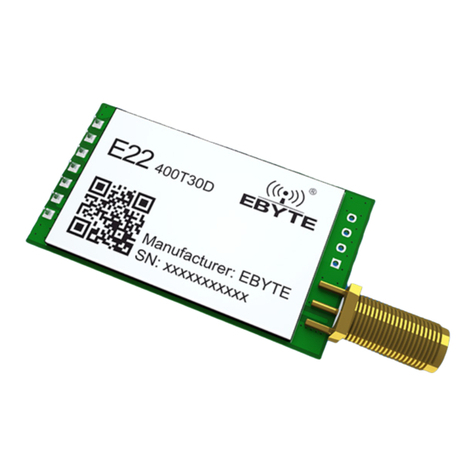
Ebyte
Ebyte E22-400T30D user manual
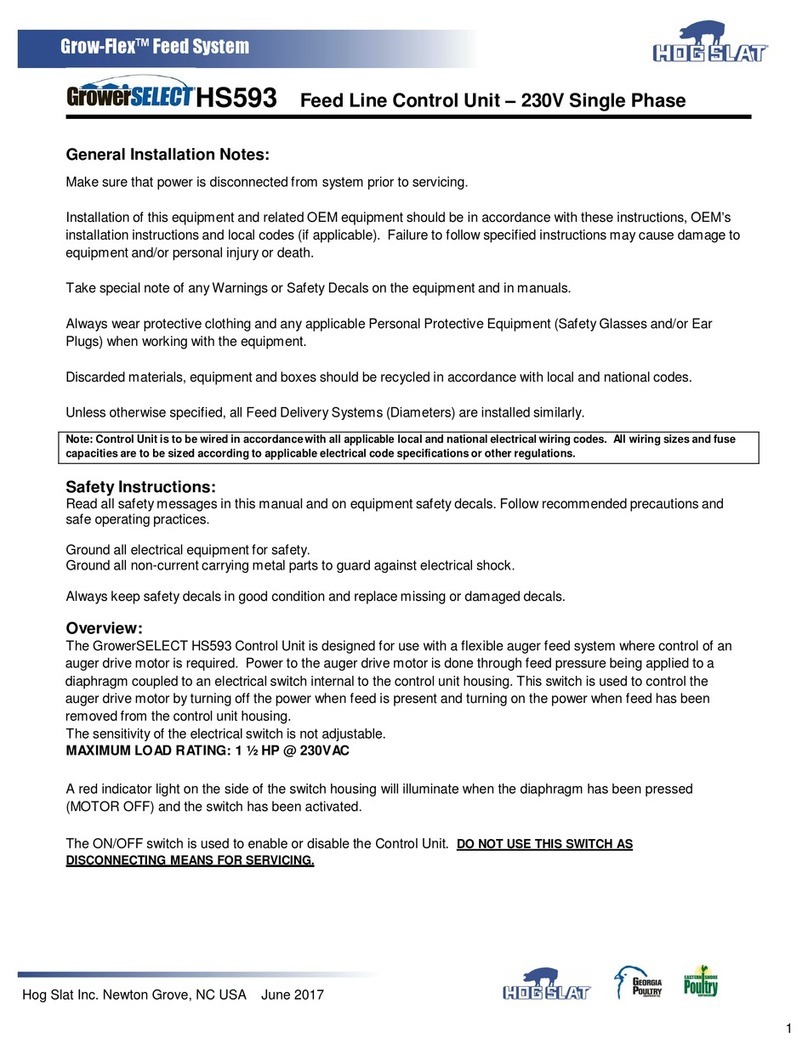
Hog Slat
Hog Slat GrowerSelect HS593 installation manual
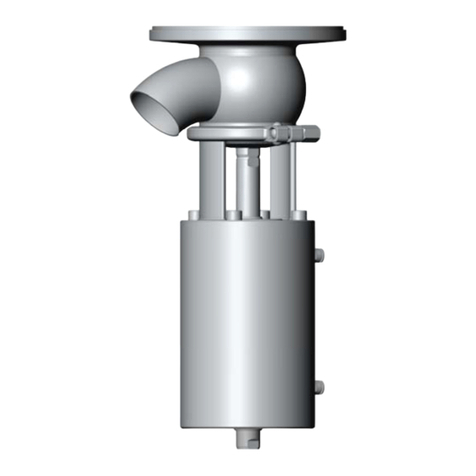
INOXPA
INOXPA INNOVA F Installation, service & maintenance instruction
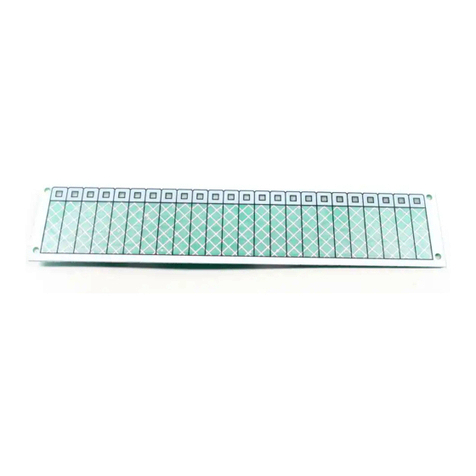
Edwards
Edwards 3-24R Installation sheet

ProSoft Technology
ProSoft Technology ILX69-PBM user manual

